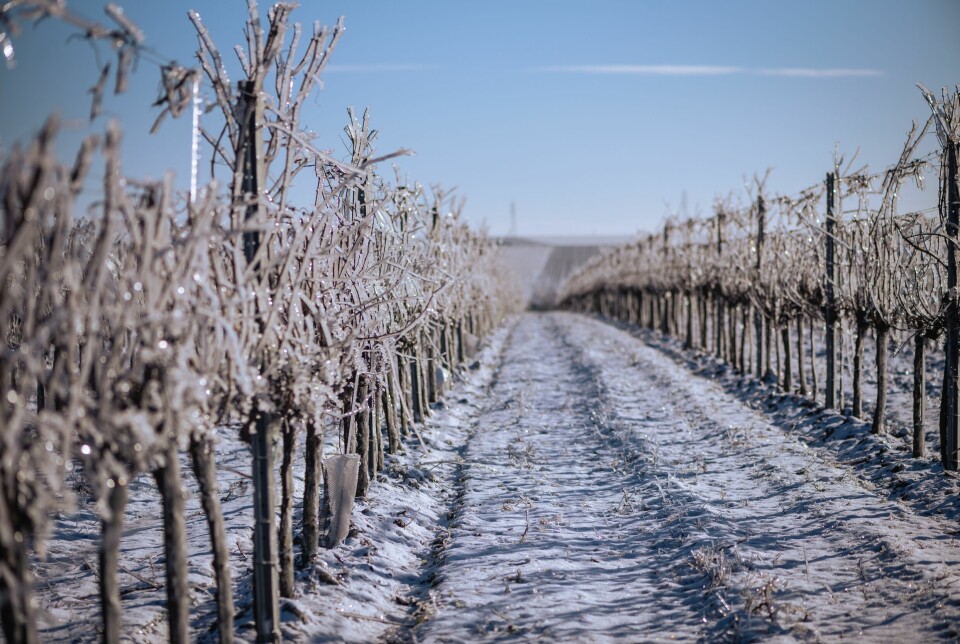Crops and vines decimated by April frosts in France
Cold snap is predicted to continue until end of week, when a cévenol storm will sweep across country
Smaller producers are in particular affected, as it can be expensive to protect against crop damage
Juergen Bauer Pictures / Shutterstock
Vineyards and farms around France have seen crops destroyed, as a bitter cold snap continues and winter-like weather is set to last until the end of the week.
In some parts of eastern France, up to 90% of vines have been wiped out by frosts, after unseasonably warm temperatures in the spring were followed by the cold snap.
Morning temperatures well below zero for several days in a row have killed off early blooming buds.
Read more: PHOTOS: Sudden hailstorm turns French Riviera towns white
“Everything froze [over the last few days],” said winemaker Cyril Raveau from the Côte-d'Or department. “This year, we're going to harvest maybe 10% of a normal crop,” he added.
His vineyard usually makes 60,000 bottles of wine annually, but will struggle to make 6,000 this year “if he is lucky,” he told France3.
Colder temperatures will continue for the rest of the week, particularly in the east.
In the Pyrénées, the low temperatures have brought snowfall usually only seen for winter time to the mountain range, with heavy snow falling at altitudes as low as 800m.
A fierce cévenol storm – the seventh already this year – is predicted for the weekend, however temperatures will return to April averages at the same time.
These are particularly fierce storms caused by warm Mediterranean air pushing up against the foothills and mountains of the Massif Central or southern Alps.
Combined with another storm from the Atlantic, storms will cover much of France, particularly the south-west and centre, bringing heavy rain and lightning.
Read more: Why are temperatures yo-yoing in France?
Can be ‘too expensive’ to protect crops despite risks
Plants, crops, and especially vines, have started to wake up and begin to flower earlier than usual in recent years because of unseasonably warm spring weather, making them more susceptible to late frosts.
These April frosts are not uncommon, however farmers and winemakers do not know in advance how severe they will be so it can be difficult to predict when crops need to be protected.
This is especially true for smaller producers, where profit margins are too thin to protect against all eventualities.
“[The vineyard] is not insured…It's quite difficult to take out insurance because frost happens [roughly] every other year,” Mr Raveau said.
During cold spells, many vineyards use traditional methods to keep vines warm, which include the burning of thousands of torches continually throughout the cold nights close to the plants.
It makes for impressive photos but can be too expensive even for a smaller vineyard.
“It's complicated. The costs are too high, between €3,000 and €4,000 per hectare. Even if we wanted to, we'd only protect one or two hectares out of the whole,” Mr Raveau said.





























